Apple's iPhone had a good run atop the smartphone league, but 10 Google Androids aim to bury the leader this year.
Motorola Mobility, Samsung, HTC and LG have promised to deliver supercharged, ultra-thin, 4G Android devices in the coming weeks and months.
The giant Android attack features bigger screens, better cameras, faster processors and speedier 4G connections than the upcoming iPhone.
The Android's phone screens, for example, start at 4 inches and go to 4.5 inches, advancing the size standard for this generation of touchscreens. By comparison, Apple's next iPhone is expected to have a 3.5-inch screen.
The new Androids are 4G phones either on AT&T HSDPA-Plus network or Verizon's LTE network, and four of the 10 will come with dual core processors.
Apple, on the other hand, is expected to upgrade to a dual-core processor this year, but the 4G LTE iPhone has been delayed to 2012, as first reported.
The presumed delay of the next iPhone from June to September, and the decision to wait a year on 4G LTE upgrade highlight just a few of the areas where Apple has been lagging behind the leaders in the Android pack.
Here's a look at the top 10 Androids that could dwarf the iPhone:
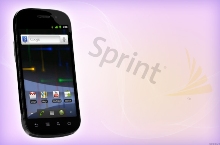 |
| Samsung Nexus S |
Samsung Nexus S, Sprint
This is Google's second run at making its own phone, only this time Samsung is manufacturing the device and Sprint is selling it. Two years ago, the Nexus One was made by HTC and sold online by Google.The Nexus S runs on Google Android 2.3 Gingerbread operating system and works on Sprint's WiMax 4G service. Because it is a phone built to Google's specifications, it includes some of Google's favorite projects including NFC or near field communications that may one day allow phones to make purchases with a swipe at a sales counter.
 |
| LG Optimus |
LG Optimus
The LG Optimus is one of the sleeker members of the new Android class. Even though it has a 4-inch screen, the phone is nearly a third of an inch thick, and at 3.8 ounces, it is a full ounce lighter than the iPhone.The LG Optimus runs on Android 2.2 or Froyo and is powered by a 1-gigahertz OMAP processor
 |
| Samsung Droid Charge |
Samsung Droid Charge, Verizon
The Droid Charge runs on Android 2.2, has a 4.3-inch LED screen and is powered by a 1-gigahertz Samsung Cortex A8 processor. According to analysts, Samsung has built the phone to consume about half as much battery power than its 4G LTE predecessor the HTC Thunderbolt.
 |
| Samsung Function, Verizon |
Samsung Function, Verizon
Samsung is pushing hard to get on the 4G LTE bandwagon The Function is a member of the Samsung Galaxy family and a follow up to the 3G Fascinate, which debuted last year at Verizon.The Function is a truly muscular phone. It runs on Android Gingerbread, it is powered by a dual-core 1.2-gigahertz processor, with 1-gigabyte of memory and another 32-gigabytes of built-in storage. And the 8-megapixel camera shoots 1080p HD video.
The Function is due later this year, and depending on the timing, may be one of the more formidable opponents to the iPhone next iPhone.
 |
| Motorola Mobility Targa, Verizon |
Motorola Mobility Targa, Verizon
Speaking of formidable, Motorola Mobility apparently wasn't happy with how the Bionic was coming together and reworked the phone under the code name Targa. Bionic was expected to be the blockbuster 4G LTE phone for Verizon from Motorola,
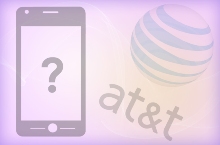 |
| HTC Sensation, AT&T |
HTC Sensation
When and if it arrives at T-Mobile, the HTC Sensation promises to be a big step up from the HTC Thunderbolt. And that's no small feat. The Sensation is expected to have one of the first dual-core 1.2-gigahertz Qualcomm Snapdragon processors, which holds big promise for Qualcomm.The Sensation has a 4.3-inch display, a 8-megapixel camera and it runs on Android's Gingerbread operating system. The phone has an aluminum unibody structure, a trend Apple started with its laptops.
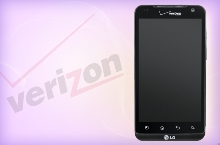 |
| LG Revolution, Verizon |
LG Revolution, Verizon
LG's focus on feature phones made it a weak player in the smartphone game, but the Korean electronics giant now wants to make up for lost ground in the super-phone category.The LG Revolution is the heaviest of the five Androids, weighing 6 ounces. But it carries the weight well in a sleek half-inch-thick form with a large 4.3-inch display screen.
The phone runs on Qualcomm Snapdragon 1-gigahertz processor and has a whopping 16 gigabytes of storage. It has two cameras, one front-facing for video chats and the rear a less-than-robust 5-megapixel shooter.
The Revolution is a 4G LTE phone that was expected to start selling at Verizon in the first quarter.
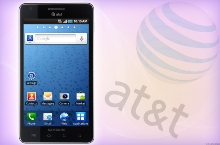 |
| Samsung Infuse, AT&T |
Samsung Infuse, AT&T
Samsung seems to be trying extra hard to be the iPhone replacement for AT&T. By appearances, the Samsung Infuse looks very much like a large version of the iPhone 4, at least from the front.Samsung had reasonable success with Android phones in its Galaxy series; with the Infuse, it hopes to take that one more step higher. The phone has a massive 4.5-inch super-AMOLED-plus screen that is designed to provide better resolution and easier daylight viewing.
The Infuse runs on a speedy 1.2-gigahertz Hummingbird single-core processor. Its front-facing camera is a wimpy 1.3-megapixels, but the rear camera captures 8-megapixels. The Infuse runs on the HSDPA-Plus wireless technology, which AT&T started calling 4G.
The Infuse, sort of like the 5-inch Dell Streak, attempts to push the limits of super-phone sizes in an effort to skirt the fringes of the larger tablet market.
AT&T starts selling the Infuse this spring.
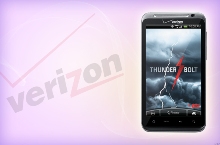 |
| HTC Thunderbolt, Verizon |
HTC Thunderbolt, Verizon
We got our hands on the HTC Thunderbolt when it arrived in March. Its speed is astonishing, but its battery life is terrible.The Thunderbolt has the best name of the new crop of 4G devices that Verizon has introduced so far. The Thunderbolt looks very much like HTC's popular EVO at Sprint, with the same convex back and kickstand.
The Thunderbolt runs on Qualcomm's 1-gigahertz Snapdragon processor, has a 4.3-inch screen and a front-facing camera as well as an 8-megapixel rear camera. All those specs, by the way, are identical to its 4G WiMax brother, the EVO at Sprint.
The difference with the Thunderbolt is that it runs on Verizon's 4G LTE network. The Thunderbolt arrived in March quarter and was hailed as the first Verizon 4G LTE phone.
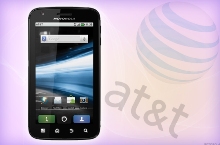 |
| Motorola Atrix, AT&T |
Motorola Atrix, AT&T
If there was one phone that caught the most attention at CES, it was the Motorola Atrix, which AT&T had been promoting like crazy.This Atrix uses a dual-core Nvidia processor like its sister phone the Bionic, and has similar specs. But it also features 1-gigabyte of RAM, the same deployed by small laptops. And curiously, that's how Motorola is pitching this device -- as a pocket computer.
During the Motorola demonstration, the Atrix was docked in an empty laptop shell, which, powered by a keyboard and big screen, made the Atrix the core of a notebook computer. The Atrix is designed to serve as both your super-phone and through a docking system, your PC.
With processing power and memory comparable to a netbook, the Atrix may help push Motorola devices further into the workplace, bumping up against Research In Motion and Hewlett-Packard's Palm business.

No comments:
Post a Comment